1986 Jeep Cherokee Is California-Dreaming
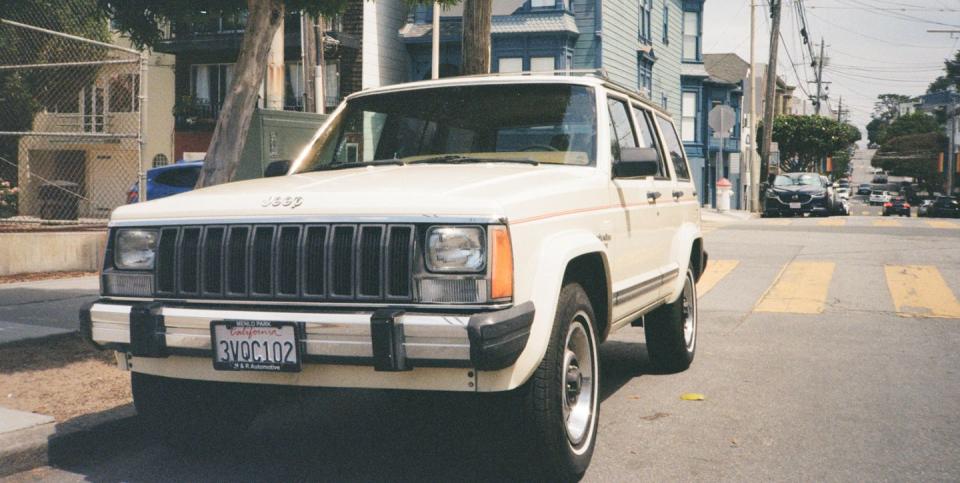
Boxy designs have become a revered token of retro merit in the automotive world. Everyone's favorite cars from back in the day were box-shaped, from the Lancia Delta Integrale to the BMW E30 and Land Rover Defender. Squared-off edges and equidistant overhangs have become less popular in the modern era, with cars like the Scion XB and Kia Soul taking the shape to extremes, and so went the boxy design renaissance. But one domestic manufacturer has held on to the shape better than most, thanks to the help of its ever-revered Jeep Cherokee.
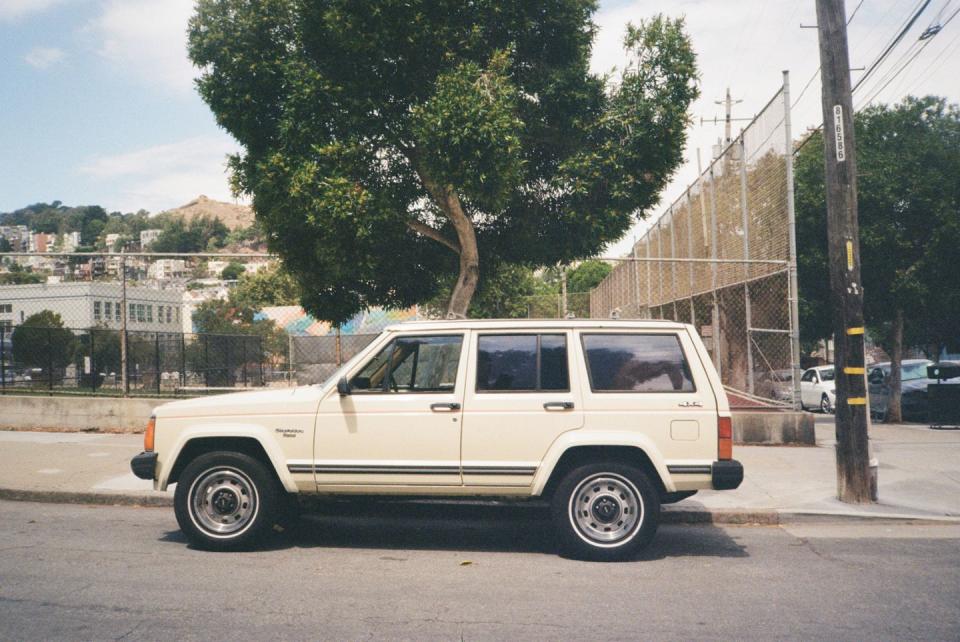
From rock crawling to the National Forest Service and every West Coast high school parking lot, the XJ generation of Cherokee has lived just about every life possible. Its 18-year production run ended in 2001, but the model hasn't seemed to drop in popularity. The timeless shape is accompanied by an abundant availability of parts, general ease of maintenance, and a booming enthusiast community, meaning the model has every reason to remain an American automotive fixture. On an unusually warm day in San Francisco this August, we found what looks like the perfect 1986 Jeep Cherokee Pioneer in AB Beige, exemplifying just how timeless the box can be.
The Cherokee was offered with a number of powerplants during its lifespan, and this particular model is powered by the least common of the crop. Borrowed from General Motors, the carbureted 2.8-liter V6 LR2 engine wasn't a powerhouse but got the job done with 115 hp and 150 lb-ft of torque, sent through either two or all four wheels. It was only used for the first year model years before being replaced by the legendary AMC 4.0-liter inline-six, though a 2.5-liter inline-four was available from its launch in 1984 until 1996. A turbodiesel was also sold in the US briefly, a 2.1-liter inline-four producing 85 hp and 135 lb-ft for the 1985 and 1986 model years. You can imagine why that powertrain wasn't especially popular.
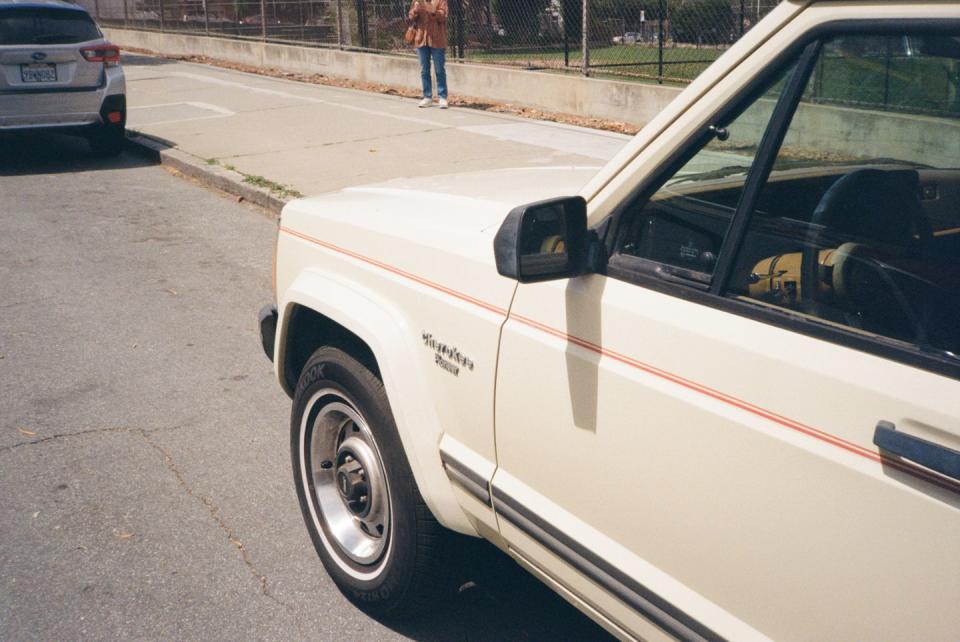
Both automatic and manual transmissions were available, in three-, four-, and five-speed configurations. Transmissions were provided by a wide range of manufacturers, including Borg-Warner, Aisin-Warner, and even Peugeot. We would have loved to see this car equipped with a manual transmission, but San Francisco's elevation challenges mean this car is equipped with a Chrysler A904 three-speed automatic.
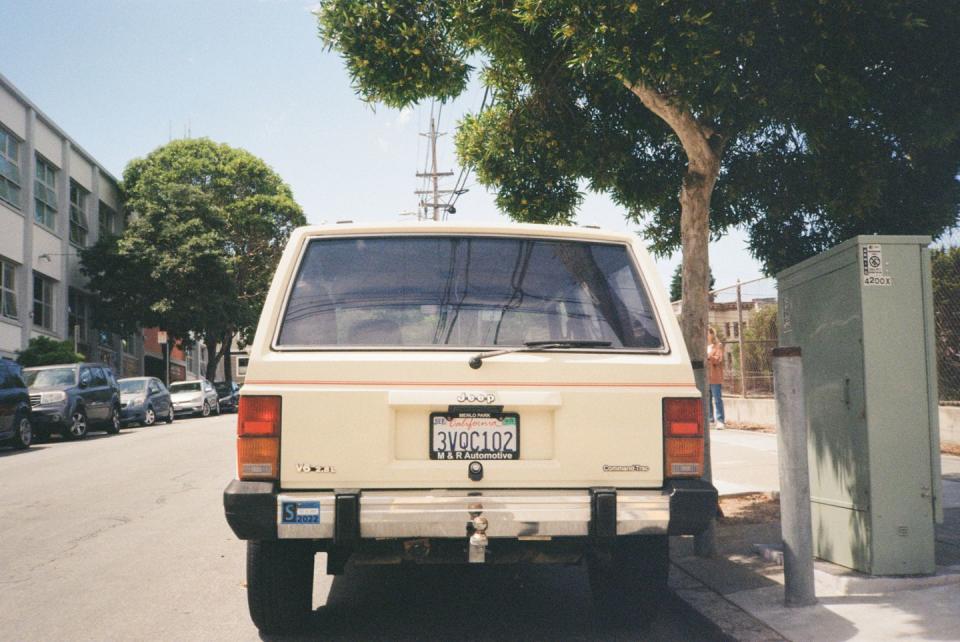
The real meat of the Cherokee models was the transfer cases and live axles, the mechanical bits that led the Cherokee to decades of off-road fame. Of the four varieties used, all of the transfer cases were chain-driven two-speed units with aluminum housings, with varying gear ratios and engagement systems. Our street-parked specimen proudly states its Command-Trac transfer case heritage with a trunk-mounted badge. Front and rear beam axle components were even more variable, with three variations of a Dana 30 axle up front and a grouping of Dana or Chrysler axles in the rear. A front coil spring suspension setup paired with a rear leaf spring suspension made for rudimentary on-road capabilities and exemplary off-road sustainability.
That's right, these cars aren't that much fun to drive on the road. In fact, it's not uncommon for the car to wobble violently on highway drives, though that driving characteristic can be tuned out. But, with the right tires and some heart, the Cherokee is nearly unstoppable on the trail.
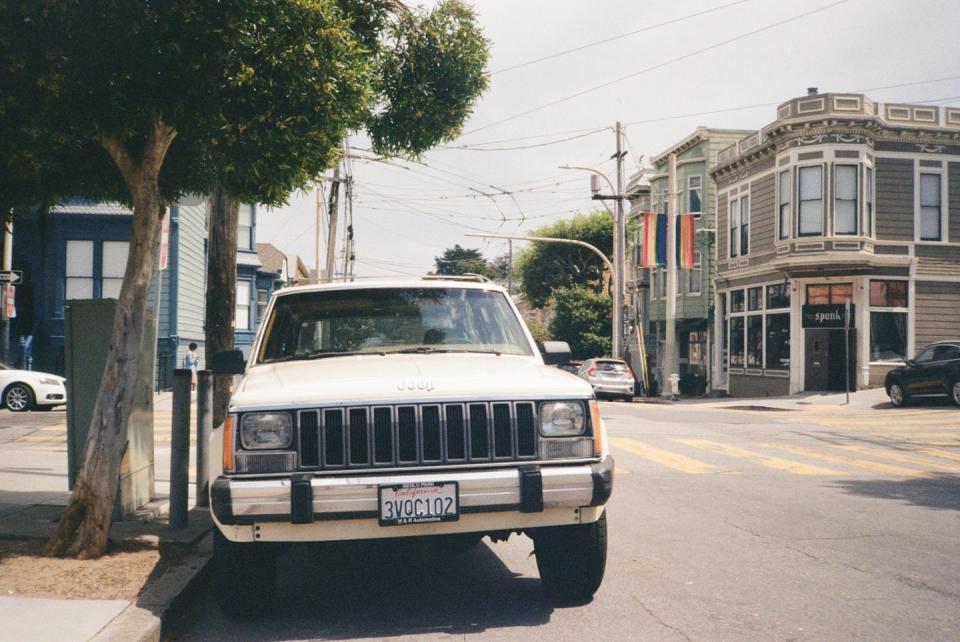
This example looks almost too clean to have ever played in the mud, but we won't judge a car by its appearance. We weren't able to flag down the owner of this mint 1986 model, but its lack of rust, street-tread Hankook tires, and the weather-worn "Menlo Park, CA" license plate cover lead us to believe this is a California car from delivery. The light brown interior color is one that would be unlikely to end up in a modern Jeep, but it works well for the 36-year-old wagon. Tying it all together is a vehicle-wide red double pinstripe, accenting the sun-baked beige in a way that screams for a RADwood submission. We can't blame this owner for keeping their Cherokee clean—it's just too damn pretty.
Share your thoughts—or memories, if you have any—of the classic XJ Jeep Cherokee in the comments below.

 Yahoo Autos
Yahoo Autos 